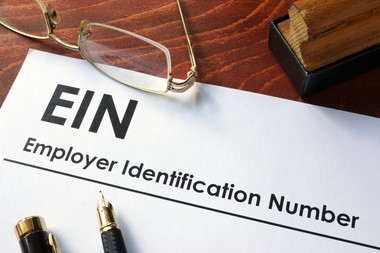How Do Employer ID Numbers Work?
Summary: Obtaining, or in some cases changing, an Employee Identification Number is essential for sole proprietorships, corporations, partnerships, and limited liability companies. Click through to learn about the complex provisions surrounding EINs.
If you have a company, you need an Employee Identification Number. There are various ways to apply for an EIN, including online at no cost. The online federal EIN application is in a question-and-answer format, with embedded help topics and hyperlinked keywords and definitions. It must be completed in one session — you won’t be able to save it and return it later.

Once all validations are complete, you’ll get your EIN immediately. You can download, save and print your confirmation notice — a fast, free and user-friendly way to get your EIN. Beware of websites that charge for this free service. You can check your state to discover whether you need a state number or charter.
But let’s take a step back. When you apply for an EIN, it is presumed that your business structure is legal, so it’s best to be sure your organization was formed legally before you apply. The clock starts running on the three-year period if you fail to file a required return or notice.
When do you need a new EIN?
If you’re a sole proprietor, you will need a new EIN when there’s a change of ownership or structure, but not for a name change, a change in location, if you add other locations, or if you operate multiple businesses. You’re required to obtain a new EIN as a sole proprietor if:
- You’re subject to bankruptcy proceedings.
- You incorporate.
- You take on partners or operate as a partnership.
- You purchase or inherit an existing business that you operate as a sole proprietorship.
If you incorporate, you’ll need to obtain a new EIN if:
- Your corporation receives a new charter from the secretary of state.
- You are or become a subsidiary of a corporation using the parent’s EIN.
- You change to a partnership or a sole proprietorship.
- A new corporation is created after a statutory merger.
You won’t need a new EIN as a corporation if:
- You’re a division of another corporation.
- The surviving corporation uses the existing EIN after a corporate merger.
- Your corporation declares bankruptcy.
- Your corporate name or location changes.
- You choose to be taxed as an S corporation.
- You reorganize your corporation and it changes only the identity or place.
- Your business structure remains unchanged as conversion occurs at a state level.
If your company is a partnership, you’ll need a new EIN if:
- You incorporate.
- Your partnership is taken over by one of the partners and is operated as a sole proprietorship.
- You end an old partnership and begin a new one.
You won’t need a new EIN as a partnership if:
- Your partnership declares bankruptcy.
- The partnership name changes.
- You change the location of the partnership or add locations.
- A new partnership is formed because of the termination of a partnership under IRC Section 708(b)(1)(B).
- Fifty percent or more of the ownership of the partnership (measured by interests in capital and profits) changes hands within a 12-month period (terminated partnerships under Reg. 301.6109-1).
And if you’ve lost or misplaced your EIN and want to verify it, you can visit the online EIN site for instructions. You may also ask the IRS to search for your EIN by calling the Business and Specialty Tax Line at 800-829-4933. The hours of operation are Monday through Friday, 7 a.m. to 7 p.m. local time.
The IRS is limiting EIN issuance to one responsible party per day. The responsible party is the person who has a level of control over, or entitlement to, the funds or assets in the entity that, as a practical matter, enables the individual, directly or indirectly, to control, manage or direct the entity and the disposition of its funds and assets.
When you apply for an EIN with the IRS assistance tool, your nine-digit federal tax ID becomes available immediately upon verification.
Note that this is just a summary; the rules can change over time. Your best bet is to work with a qualified tax adviser.
©2023
